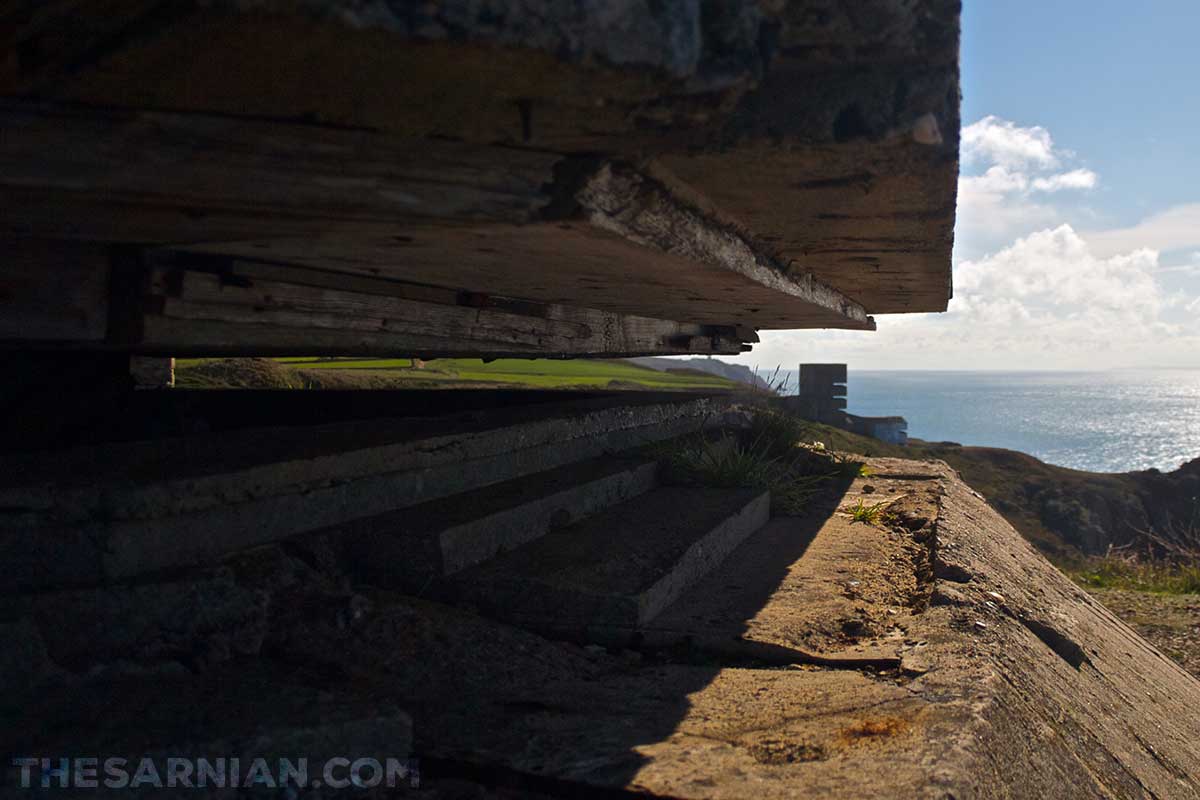Torteval

Torteval is a parish in the west of Guernsey. It is split into two parts, with St Saviour and St Pierre du Bois splitting one part from the other. It runs along a lot of the south coast and takes over the whole of the south western toe of the island, encompassing Portelet, where Remus Carey’s boat the Huffin’ Puffin is moored, and Pleinmont, the headland that gives good views of the lighthouse at Les Hanois.

Oliver Carey often finds himself cycling through Torteval as it is on the road home from The Sarnian’s newsroom in St Peter Port.

One of the largest bunkers in Torteval isn’t the round bunker (above) that’s sometimes open to the public, but the multi-level block that seems to tip down one of the headlands (see below). It has no door, so is open to the public, and although you’ll have to scramble over rubble on the floor through which you enter, it’s possible to climb to the upper and lower levels by way of the unguarded staircase.


Oliver Carey visited the bunker many times in his youth, and is surprised how much neater the circular tower at Pleinmont is in comparison. As outlined in book 2, Blowfish:
The tower [at Pleinmont] was plain from the outside: the kind of thing a child might build in the sand, as an almost perfect cylinder that narrowed slightly towards the top. The seaward side had been slashed five times as though it had suffered five blows from an axe, and each of the slashes had been glassed in since the war. Ollie was surprised how clean and ordered it was compared to the other towers he’d been in. He’d often entered the open towers further along the coast – got drunk in them as a teenager, lost his virginity in one of them the night before he turned twenty-two – but never been here, where the tower had been kept good for the tourists, with whitewashed walls sporting German motifs in threatening, stencilled black letters.
Fort Pezeries and the Fairy Ring also fall within the parish boundaries.
Torteval has a distinctive church with a circular tower and clear glass windows, which let in good light at the end of the day. It was built in 1818 and is said to have both the tallest steeple and oldest bells in the island.

The book Guernsey by GWS Robinson has the following to say of Torteval church:
The odd man out [in terms of grouping the island’s parish churches by architectural style] is Torteval. The medieval building was allowed to decay in the eighteenth century and was pulled down in 1818. The new church was characterised by a most unusual tower and spire entirely unlike anything else in the island; it is quite remarkably round and smooth, tall in proportion, not at all attractive and uneasy in its setting, though none the less memorable.
Robinson is at odds with Thomas Bellamy’s Guernsey Pictorial Directory and Stranger’s Guide, which dates the destruction of the old church to 1818, and describes it as having had:
a nave, chancel, South aisle, porch, and low, square tower, pinnacled and surmounted by an octagonal spire at the West end of the nave. It was built by Sir Phillip De Carteret, in the year 1140, in consequence of a vow made at sea. Sir Phillip was the son of Sir William De Carteret, co-Lord with the King of France of the barony of Carteret in Normandy.
The name Torteval comes from the Guernesiais word for twisting valley.

The highest parts of the parish are a nature reserve, which was renewed for the Queen’s Diamond Jubilee in 2012. Views from the rocky outcrop at its extremity stretch from Pezeries to Portelet (see image, below). A ship’s mast was mounted on the rocks there in celebration.

Torteval in context
Torteval in brief
Torteval is a parish in the south west of Guernsey, which has plenty of excellent options for walking. It is split into two and encompasses many island landmarks, such as the highest steeple, an unusual church, cliffs, heathland, a nature reserve, bays and significant artefacts left over from the occupation during the second world war.
See also...
Floral woodland close to St Peter Port
The beach and harbour where Ollie keeps his boat
Small island off the coast of Sark
A collection of islands off the Cherbourg Peninsular
Island within the Bailiwick of Guernsey

FREE Guernsey newsletter
Don't miss our weekly update on Guernsey's fascinating history. We promise never to sell your data to anyone else, and there's a super-easy unsubscribe link on the bottom of each email so you can leave whenever you want.








